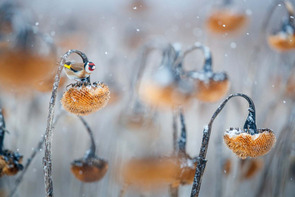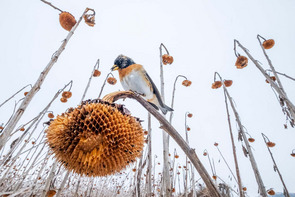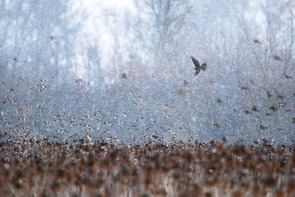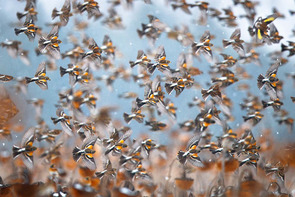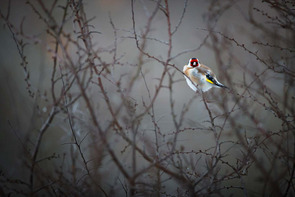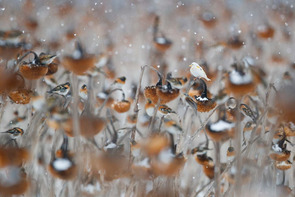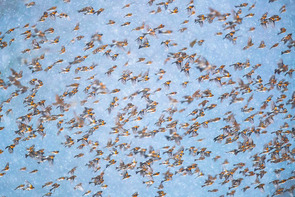Winner: Mateusz Piesiak - Poland
“My name is Mateusz Piesiak and I am a wildlife photographer from Poland. I graduated in automation and robotics at Wrocław University of Science and Technology but then decided to follow my heart and turn my passion into a profession.As long as I can remember, I have been fascinated by nature. I had my first camera at the age of 13 and my passion for photography has grown steadily ever since. I photograph all kinds of animals, but birds are especially dear to my heart.
Being in nature allows me to relax and escape the hustle and bustle of the city. I love working with special lighting conditions and in difficult weather. I often photograph bird species that are common in the urban environment but endeavour to portray them in unconventional ways. When photographing timid birds, I actually enjoy the experience of sitting in my hide -I feel like a visitor in the front row of the theatre, allowed to witness the great spectacle of natureat close range. Besides photography, I enjoy playing the piano and coaching volleyball.”
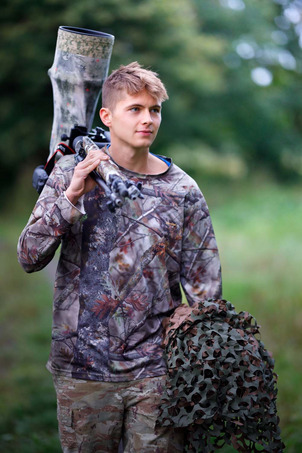
Project: Sunflower paradise
A few years ago, a sunflower field close to my home could not be harvested because the soil was waterlogged after summer rains. Albeit a financial loss for the farmer, the field became a true paradise for overwintering birds. A huge field of sunflower plants replete with energy-rich seeds was bound to act as a magnet to many bird species -so it was no wonder that when winter finally arrived, tens of thousands of birds appeared, in particular bramblings, goldfinches and greenfinches. The plethora of passerine birds, in turn, attracted diverse birds of prey, with falcons dominating the sky and sparrowhawks patrolling amongst the sunflowers.
I spent many days in the field attempting to document this unusual phenomenon and capture the diverse species from different angles. I was endlessly fascinated by how perfectly the bramblings' showy plumage blended in with the colours of the dry sunflowers. Sometimes it was only the cracking sounds madeby finches feeding on sunflower seeds that made me realize I was surrounded by birds everywhere in the field. When a falcon appeared, all the finches would take off simultaneously and form a flock that could change shape and direction with lightning speed -making it difficult for the predatory falcon to attack any single bird. At times, several flocks would merge into one and the sky overhead would darken.
After weeks of severe cold, the weather suddenly warmed up and the snow melted. For the birds, this was a harbinger of spring. In the days that followed, almost all bramblings left the field and began the journey to their northern breeding grounds. Only a handful of birds lagged behind. The sunflower field had suddenly become very quiet. Only memories and the multitude of photographs on my camera card remained.
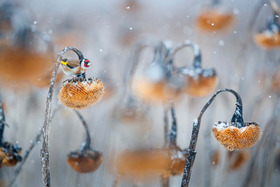 Goldfinch
GoldfinchAside from the brambling, the goldfinch was the most numerous bird species in the field of sunflowers.
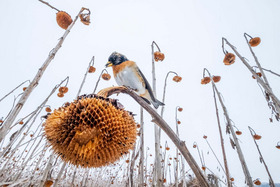 Sunflower paradise
Sunflower paradiseI wanted document the relative sizes of the small bramblings and the enormous sunflower plants. For this, I set up my camera with a wide-angle lens amongst the sunflowers and camouflaged it with snow and dried flowers. I then waited with the remote trigger in hand. After many unsuccessful attempts, a whole flock of bramblings finally alightedin front of my camera and one individual came to rest at exactly the perfect spot.
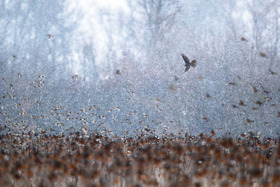 The chase
The chaseA sparrowhawk hunting finches. Birds of prey search for weak and sick individuals that make easy targets.
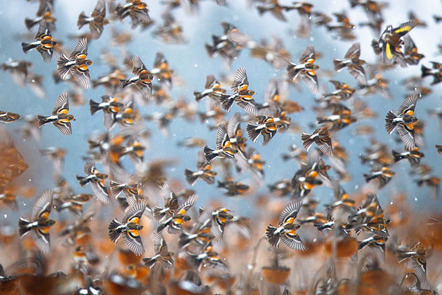
Bramblings fleeing from a falcon. Flocks constantly change their shape and flight direction to prevent predators from concentrating on any single bird.
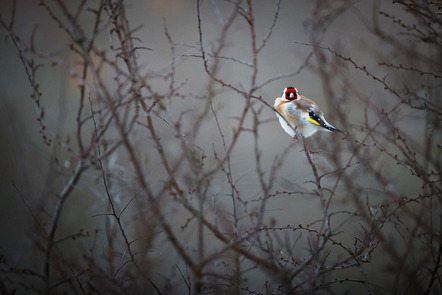
After feeding, the birds sought shelter in dense bushes that provided protection from falcons and other predators.
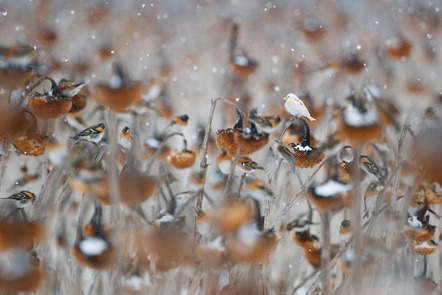
Among the thousands of birds, there was one melanistic goldfinch. Unfortunately, it was soon caught by a peregrine falcon, most likely because its light-coloured plumage stood out against the masses.

At times, several flocks merged into one, darkening the sky overhead -an impressive choreography.
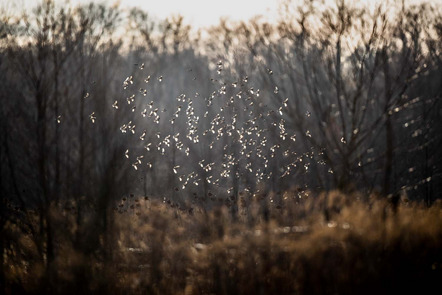
After many weeks with below-freezing temperatures, the days became somewhat warmer. The snow melted and the birds began departing from the sunflower field.









